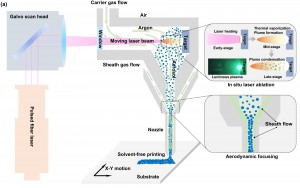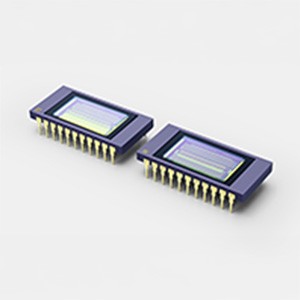
Though the layout of these efficient thin-film solar cells is relatively simple, the material properties are very complex and, despite their success, not yet entirely understood. For two decades, scientists have believed that adding sodium to the core of these devices makes it more difficult for the indium and the gallium to homogenize.
A new study led by the University of Luxembourg shows, however, that this long-held assumption is only true if the film is composed of many crystals. The researchers in fact observed the exact opposite behavior in monocrystalline films. “This is puzzling!” says principal investigator Diego Colombara, meanwhile Marie Curie Research Fellow at the International Iberian Nanotechnology Laboratory in Portugal. “It can feel disruptive... but it means that we are one step closer to understanding CIGS. And fully understanding this material will ultimately lead to more efficient and cheaper renewable energy.”
The study setup
First, Colombara´s colleague at Luxembourg´s Laboratory for Photovoltaics, Florian Werner, fabricated gallium-free films on a gallium-containing substrate. A technique called metal-organic vapor phase epitaxy allowed him to fabricate films made of only one crystal. Secondly, Colombara introduced sodium into the films, following a procedure they had developed in a separate study at the University´s Laboratory for Energy Materials. “Simply put,” says Colombara, “we cooked the films along with a sodium source or in the absence of that source.”
The team then compared the extent of intermixing between the gallium-free crystal and the gallium-containing substrate in the presence and in the absence of sodium. “This is easier said than done,” the principle investigator exclaims, noting that the breakthrough required the concerted effort of 18 co-authors from five institutions (the University of Luxembourg, Luxembourg Institute of Science and Technology, the Max Planck Institut für Eisenforschung, the Institut Lavoisier de Versailles and Ansaldo Energia).
CIGS is a complex material, as mentioned, and the established manufacturing process relies on a material that is even more complex because it is made of many crystals. “My motivation comes from the prospect of uncovering this complexity one small step at a time,” Colombara says. “That is why I thought we can gain some insights if we remove one level of complexity and literally work with one crystal at a time.”
Why scientists made incorrect assumptions in the past
There is well-established evidence that sodium hinders indium and gallium from intermixing if the CIGS is made of many crystals, according to the expert, who points to a previous study that confirmed this effect. “It was absolutely logical to assume that the effect is intrinsic to the CIGS material and does not depend on whether you have many crystals or just one,” he says. “In the end, the boundary between crystals is what seems to matter.”
How these assumptions and beliefs could prevail for so long without being refuted? Colombara blames the tendency to stick to the conventional way of doing things. “This is understandable: Everyone aims to have a direct impact on the technology,” he says. “However, looking at things from a different perspective can reveal unexpected behaviors and help to further the technology in an indirect way.”
Potential impact on future CIGS-based technologies
The new findings could indeed influence future solar cell designs. In fact, Colombara anticipates we do not have to look too far ahead to notice the impact: “There is a large efficiency gap in today´s generation of devices between laboratory-scale cells and commercial-scale photovoltaic modules,” he points out. “I do hope that our study will help to reduce this gap. But for this to happen, more work is needed.” The researcher also thinks that, indirectly, the improved fundamental understanding will also help the development of future CIGS photovoltaic technologies, such as tandem and microconcentrator devices. He himself is currently actively involved in the latter topic, in his new role at the International Iberian Nanotechnology Laboratory.
A surprising outcome
The principal investigator reveals that the twist the research took surprised him, too: “I did expect to observe a different behavior, but I was surprised to witness a 180-degrees phase-shift of the outcome. This I did not expect,” he shares. “It is scientifically inspiring and worth all the effort I invested in my project GALDOCHS."
The next step
“This study is just the beginning,” he says. “Excitingly, there is plenty more to be understood, that means plenty of potential opportunities for technological development.”
More experiments will be necessary to confirm the effect and test the hypotheses outlined in the study at hand. And Colombara expects new results on potassium doping will be presented by Torsten Schwarz at the International Microscopy Conference IMC19 in Sydney in September. “On a fundamental level, I devoted some effort to explain the mechanism by which sodium enhances the atomic intermixing,” he says. “In June, I will present some of my findings at the World Conference on Photovoltaic Energy Conversion (WCPEC-7) in Hawaii.” Colombara concludes: “CIGS is a hot topic researched by excellent groups worldwide, so I expect a very dynamic progress in the near future.”
The findings are published in the journal Nature Communications, under the title “Sodium enhances indium-gallium interdiffusion in copper indium gallium diselenide photovoltaic absorbers.”
Written by Sandra Henderson, research editor Novus Light Technologies Today























 Back to Features
Back to Features































